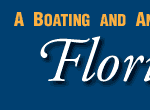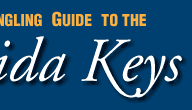CONTACT US:
Florida Fish and Wildlife
Conservation Commission
Fish and Wildlife
Research Institute
100 Eighth Avenue SE
St. Petersburg, Florida 33701
727-896-8626
|
|
|
Mote Marine Laboratory
Tropical Research Laboratory
24244 Overseas Hwy.
Summerland Key, FL 33042
305-745-2729
|
|
|

|
|
This project was funded in part by a grant awarded from Mote Marine Laboratory's Protect Our Reefs Grants Program, which is funded by proceeds from the sale of the Protect Our Reefs specialty license plate. Learn more at .
|
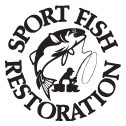
|
|
Additional funding for this project was obtained through the Federal Aid in Sport Fish Restoration Fund.
|
|
|

|
The Florida Keys are a rich mosaic of fish and wildlife habitats that form life-sustaining links in an biologically productive ecosystem. From coastal mangroves to underwater meadows of seagrass to patch and plaform reefs, from shallow water of Florida Bay to the open water of the Atlantic Ocean, each interdependent habitat plays a vital role in this “Estuarine Machine.”
Three major habitats are highlighted here: corals and hardbottom, mangroves, and seagrasses.
|
CORALS and HARD BOTTOM
Coral reefs are part of an interdependent ecosystem that includes mangroves and seagrasses. Bank reefs and patch reefs occur on the ocean side, whereas hard bottom coral communities are common on the bay side of the Florida Keys. Coral reefs contain more varieties of life than any other marine environment, rivaling even the rainforests on land.
The coral reef ecosystem of the Florida Keys is alive with an abundance of fish, stony corals, octocorals, sponges, jellyfish, anemones, snails, crabs, lobsters, rays, moray eels, sea turtles, dolphins, sea birds, and other sea life. The reef is home to many of Florida’s threatened and endangered species.
Stony corals are actually composed of millions of tiny slow-growing animals called polyps. Each one secretes a calcareous exoskeleton that forms a coral colony. Some boulder corals require years to grow one inch. These coral colonies, as well as other calcium-producing plants and animals, cement together to form the reef structure. The reef is constantly eroding and regrowing as new colonies settle on top of the skeletons of older ones.
|
|
More information about coral reefs and hard bottom can be found in the brochures "Florida's Coral Reefs" (PDF, 443 KB) and "Coral Reefs of Southeast Florida" (PDF, 3.3 MB).
|

|
SEAGRASSES
Seagrasses are flowering underwater plants found at shallow depths in bays and lagoons and in nearshore waters of the of the Gulf of Mexico. As a nursery environment, seagrasses support small fish, shrimp, and crabs that hide among the blades and feast on decaying leaves. Seagrasses also help stabilize shifting sands on the bottom of the bay and improve water clarity by trapping fine sediments.
|
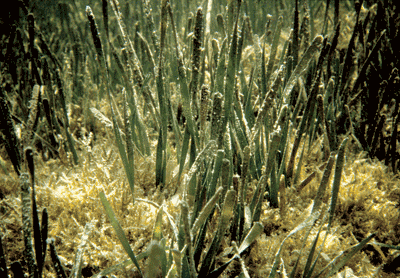
|
Seagrasses are an important part of the food web. They provide food for turtles, manatees, and a variety of fish and habitat for filter-feeding organisms and foraging sea life such as sea urchins and sea cucumbers. Seagrasses provide a nursery for pink shrimp, lobster, snapper, and other sea life. They filter the water by trapping sediments, releasing oxygen, and stabilizing the ocean bottom with their roots.
Although they were once plentiful, seagrass beds now cover less than half of their original acreage, a loss triggered by dredge-and-fill activity and declines in water quality. Damage from motorboats is severe in areas. Boats that stray into shallow waters may dredge up the bottom, uproot seagrasses, and cut sandy trenches that may stay barren for years. The noisy approach of a boat or personal watercraft can disturb nesting birds, exposing the eggs or nestlings to predators and the intense sun. In addition, disturbance of shallow feeding grounds can lead to the starvation of birds. To help preserve seagrasses, stay within marked channels and avoid shallow grass beds. If you run aground or enter grass flats to fish, stop your motor, tilt it up, and pole or push your boat through the bed.
|
|
More information about seagrass can be found in the brochure "Florida's Seagrasses" (PDF, 600 KB).
|
|
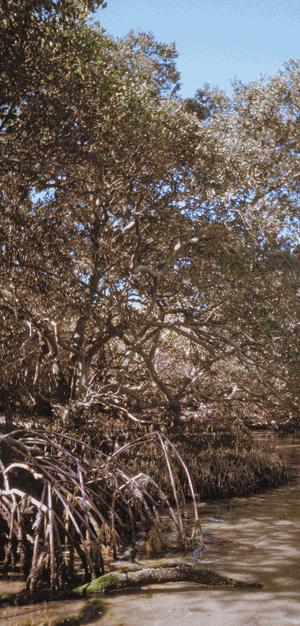
|
MANGROVES
Mangroves are tropical trees that thrive in salty environments along the water’s edge. Like seagrasses, they provide food and cover for a vast array of small fish and animals. Their roots anchor shorelines, and their branches serve as nesting sites for a wide variety of birds.
Three species of mangroves are common in the Florida Keys. Red mangroves, typically located closest to the water, are easily distinguished by their tangled reddish roots that branch out over the water. Black mangroves feature numerous finger-like projections, called pneumatophores, that surround the base of the tree. White mangroves, which often occupy the highest elevations of the three species, have no visible aerial root system. The leaves of the white mangrove are yellow-green.
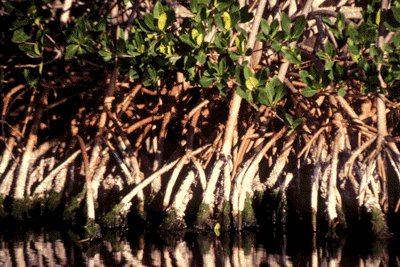
© Chris Anderson
|
|
More information about mangroves can be found in the brochure "Florida's Mangroves" (PDF, 512 KB).
|
|
|
|
If you are out snorkeling, diving, fishing, paddling, or boating and see anything that may be unusual or out of the ordinary (including lionfish) in the waters around the Keys , please record the location, date, and time, and contact the Marine Ecosystem Event Response and Assessment (MEERA) project. They can be reached by phone (305-395-8730), e-mail, or online.
If you have any questions, comments, or suggestions about this Web site, please e-mail us at Boating_Guides@MyFWC.com.
Would you like to receive notices of changes to this Web site and the Boating and Angling Guides to the Upper, Middle, or Lower Keys? If so, please e-mail us and include SUBSCRIBE-KEYS in the subject line.
|
|
